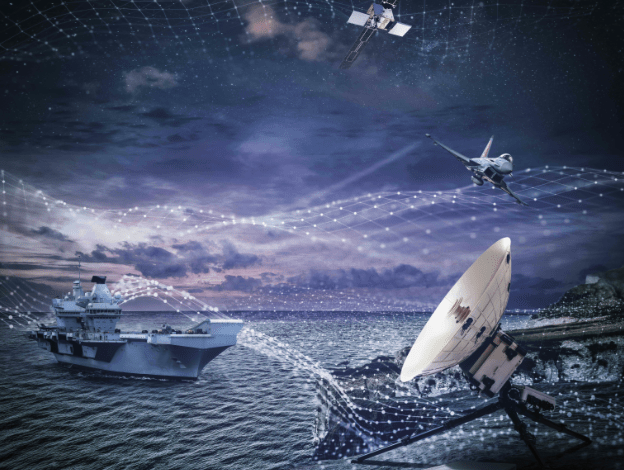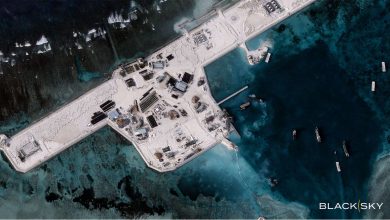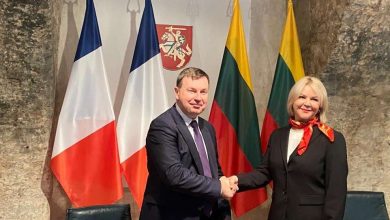
Will Your Satellite Communication Stand Up to Hostile Forces?
Alasdair Ambroziak – Thales UK’s Director of Sales for Satcom and Security
In environments with elevated threats, the availability of communications can determine the success of a mission. Contemporary military operations necessitate communication systems that can adapt, endure, and deliver under stress. While SKYNET 6 has established the course, the true challenge remains in execution: integrating hybrid SatCom, innovative terminals, and robust, secure, and adaptable networks capable of enduring congested, intricate, and highly contested spaces.
The initial casualty in modern warfare might be your communications
Spoofing, jamming, cyber threats, and electromagnetic interference can disrupt signals and networks before the initial shot is fired, leaving forces blind, deaf, and outmaneuvered.
Yet the urgency expressed in the UK MOD’s Strategic Defence Review resonates clearly: the Integrated Force, embarking on a Digital Mission, must amplify its lethality tenfold across a constantly shifting battlefield. Proposed capabilities like the Digital Targeting Network – supported by a robust communications framework – and the creation of a new Cyber and Electromagnetic Command reflect strategic intent, while also illustrating the significance of this domain in current and future warfare.
SKYNET 6: SatCom as a tactical asset
With the SKYNET 6A satellite earmarked for launch in 2026, MOD’s next iteration of SKYNET is set to take flight, guided by a North Star that recognizes SatCom not merely as infrastructure but as a strategic asset in its own right.
SKYNET 6 vision statement: “Delivering world-class satellite communications on demand to facilitate military strategic impacts against present and evolving threats.”
The initiative represents a complete revitalization of the UK’s secure strategic beyond-line-of-sight communications; emphasizing sovereignty, interoperability, and modularity across different orbits and mission types, while rejuvenating the space segment, ground infrastructure, and user terminals.
This is arguably among MOD’s most ambitious initiatives to date. Contracts like the Next Generation Land Terminal and the Maritime Military SatCom Terminal present both challenges and opportunities for industry suppliers to enhance the military’s terminals, allowing them to progress in alignment with SKYNET 6’s extensive goals.
Yet amid these objectives and demands lies a profoundly simple reality: the frontline operator requires communications that function flawlessly – the first time, every time.
Hybridization: intelligent, dynamic, adaptable SatCom for the contemporary battlefield
On the frontlines, the correct message must reach the appropriate person at the ideal time, with the convenience and functionality that smartphone users take as a given – regardless of the degraded, contested, or denied environment, and irrespective of the transmission bearer.
Thanks to the growing hybridization of networks, this is not an unattainable reality. By utilizing various orbits (LEO, MEO, HEO, and GEO), frequency bands, and non-satellite communication means (like terrestrial or tactical radio systems), hybridization aspires to create a user experience comparable to commercial mobile connectivity. Smartphone users, for instance, seldom need to delve into their settings to manually switch between 4G, 5G, and Wi-Fi, nor do they ponder which network to select. It simply connects. That’s the aspiration for defense.
Orchestration is essential to creating a “mobile-like” SatCom experience, whether managed within the terminal or elsewhere in your communication framework. This involves coordinating different satellites, frequency bands, and terrestrial systems to intelligently and dynamically select the most favorable communication route based on signal strength, latency, bandwidth, and security levels. The secure flow of data along this path is imperative. Every piece of information, regardless of its origin or destination, must be deemed trustworthy. This necessitates embedding comprehensive encryption, authentication, and integrity safeguards to ensure data can be promptly received, processed without delay, and utilized confidently.
As one might anticipate, civilian telecom standards cannot simply be transposed into the military arena as part of a hybrid SatCom framework due to distinct security requirements and prevailing threats. However, opportunities exist to harness these – such as 3GPPP from commercial telecoms, and Open Antenna to Modem Interface Protocol and Digital IF Interoperability from SatCom – to enhance interoperability.
The multi-faceted approach to mission-critical communications
With hybrid SatCom, capability alone is insufficient – it must produce an effect. Whether facilitating machine-to-machine rapid communications for collaborative unmanned systems or hastening setup and situational awareness with minimal user involvement, the true assessment lies in how methods of exchanging information perform under strain. This entails not merely roaming across networks or resisting interference, but empowering operators with adaptive, secure, mission-ready communications they can rely on at the tactical forefront.
Thales’ SurfSAT–L: next-generation SatCom for the German Navy
Deployed onboard the German Navy’s F126 frigates, Thales’ SurfSAT-L system will provide a very high-power tri-band (Ka mil, Ka civil, X) SatCom solution that allows simultaneous transmission across these three frequency bands. The system can connect to MEO and GEO satellites, both military and commercial, ensuring optimal connectivity and extensive coverage even in the most demanding operational scenarios.
Perhaps the most crucial lesson is that a single solution cannot accomplish everything. No singular terminal, radio, or satellite can fulfill the requirements of every mission. What’s essential is a resilient, integrated SatCom system composed of top-tier tools, terminals, techniques, and methodologies; secure by design, with redundancy implemented at every level, excluding any single points of failure. Thus, the solution must be as powerful as it is versatile: significantly greater than the sum of its components, specifically crafted to connect, protect, and propel entire teams, from core operations to the frontline.
A clarion call from MOD, a rallying cry for industry
As reactions to the SDR settle, John Healey’s recent remarks cut through the noise:
“We will equip our Armed Forces with the capability to act at unprecedented speeds – connecting ships, aircraft, tanks, and operators so they can share crucial information instantly and strike further and faster.”
With these objectives clearly outlined, the methods and means become sharply focused: smarter, interoperable systems over isolated equipment; solutions developed in collaboration with the customer, rather than engineered to conform to static, predetermined needs; and a hybrid SatCom framework built on the expertise, intuition, and ingenuity of industry’s numerous dynamic and skilled participants.
The moment is ripe for engineers, suppliers, and integrators to seize the opportunity and become, akin to the systems we construct, greater than the sum of their parts. For communications to endure, and for the UK MoD to maintain its advantage, industry must act – harder, quicker, and with greater integration, not only amongst themselves but also within and between Front Line Commands.







